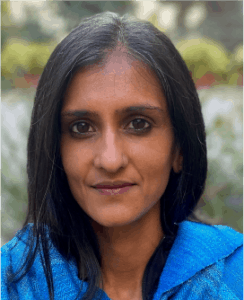In Conversation: Sapna Desai, Associate, Population Council
Jun 05, 2023

I started my career in public health with the Self-Employed Women’s Association (SEWA) in Gujarat, where I learned the power of collective action and using evidence for action. I spent several years with the national federation of SEWAs (SEWA Bharat), establishing community health and health insurance programs in several states, with a focus on Bihar, W Bengal and Delhi. My doctoral work examined the impact of SEWA’s community-based interventions on improving women’s health and explored unnecessary hysterectomy amongst women workers in the informal economy.
The use of hysterectomy as a common procedure amongst young women in some states ignited my interest in understanding the health system – particularly the importance of continuity of care, the role of health insurance, people’s access to information and systems of accountability. Wide variation in hysterectomy rates across India also drives home the importance of understanding state and district-level health systems.
Since then, and now at the Population Council Institute, my work focuses on women’s health through the life cycle, health systems and the role of community-based movements such as women’s groups.
As a Commissioner, I have participated in the Citizen’s engagement workstream and am co-leading a multi-disciplinary consortium of Commission partners examining district-level pathways to UHC. This idea was catalysed by the district-level UHC index : why do districts [not just states] perform so differently? Our team has interviewed health system actors and communities across six diverse districts. What’s been most fascinating, and most instructive, is the divergence in pathways between even the highest-performing states. A history of social movements, strong local governance, a public health cadre and of course, financing patterns, are some of the factors beginning to emerge. We’re also learning how different players in the health system – providers, community institutions and ASHAs – define UHC and enablers and barriers across contexts. It’s been a very rich learning experience, largely due to partnerships and participation across the Commission.
The district study has certainly taught us there is no uniform answer. UHC pathways will have to take different forms across states and perhaps this is the challenge: devising nuanced approaches suited to India’s different contexts. That said, building strong primary health care [including community engagement], ensuring financing enables high-quality continuity of care and supporting accountability at different levels are common threads that deserve greater priority as we build a more equitable health system, along with critical human resource challenges that have been discussed at length.
There have been many “solutions” tried and lessons learned by actors across India’s diverse health system. I hope the Commission, through its many consultative processes and multiple forms of evidence, helps shines a light on people’s experiences and aspirations for the health system. Integrating the views of less- heard voices will be crucial to supporting journeys towards UHC.
